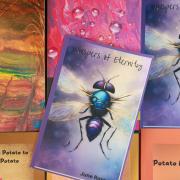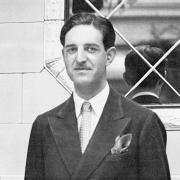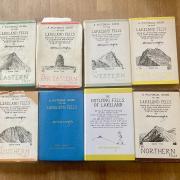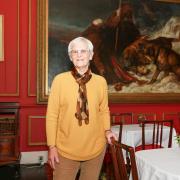The story of the Pendle Witches has enchanted us for four centuries and this year its appeal will be stronger than ever, says author Richard Catlow
It is 400 years this month since a fateful meeting between a young girl and a pedlar in Colne led to the most famous witch trial in British history.An imaginative series of events are being staged across Lancashire this year marking 1612, the year that saw this extraordinary story end on the gallows.
It will ensure we continue our fascination with the story of the Pendle Witches, providing Lancastrians with the chance to find out more about their heritage and attract visitors from much further afield. The anniversary has also revived the campaign to officially pardon them.
One of the highlights is the opening of a new, 48-mile Witch Walk between Pendle and Lancaster. It will be marked with carved stones bearing words especially written by Poet Laureate Carol Ann Duffy. There will also be guided walks, talks, exhibitions, book launches, art displays and sculptures.
What the alleged witches, those mainly poor and probably illiterate women, would have made of all this is hard to imagine. At the very bottom of society, they largely lived by begging and the witch powers they claimed must have made it easier for them to get alms in those superstitious days.
On the throne was King James I, brought up in Scotland and a fervent believer in witchcraft – he even wrote a book about it. Until James, the English gentry who administered the law had been, to their credit, largely sceptical which explains why Pendle’s magistrates had ignored claims about their local witches for so many years.
This all changed on March 18 when young Alizon Device, a member of one of the two main witch clans, met elderly pedlar John Law and asked him for some pins. He refused and in her anger Alizon cursed him.
They had hardly parted when the old man fell to the ground. We would probably diagnose a stroke today, but ‘witchcraft’ was the cry that went up then. John Law was carried to a nearby inn where he was visited by his son Abraham, who heard the story and went in search of Alizon. He found her and dragged her to the inn where she was said to have confessed and begged for forgiveness.
But, the next day, on March 30, she was hauled with her mother Elizabeth and brother James before magistrate Roger Nowell at Read Hall. Alizon not only admitted her crime but went on to implicate others in witchcraft. It may have been malice that led her to implicate innocent people she disliked.
Alizon was detained and Nowell arranged to see her grandmother, the infamous Old Demdike, whose real name was Elizabeth Southerns, and Chattox – her main rival – on April 2. He heard enough to detain them along with Chattox’s daughter Anne Redfearn and arrange for them to be packed off with Alizon to the assizes at Lancaster.
Nowell arranged for Henry Hargreaves, the forest constable to make further inquiries. A clay image and human teeth taken from graves at Newchurch were found. But the constable’s main discovery concerned a great meeting of witches at Demdike’s home on Good Friday where they feasted on stolen mutton and plotted murder and mayhem.
On April 27, Nowell and his fellow magistrate Nicholas Bannister found a star witness in Alizon’s younger sister, nine-year-old Jennet. Among those named as being at the gathering was Alice Nutter – the only person from a prosperous background. For this reason she has, more than any of the others, been the subject of many theories with some speculating that her real crime was to have been a Catholic.
Most of those named were packed off to Lancaster as well. But prison in the grim castle proved too much for the elderly Demdike and she died before standing trial. Her grand-daughter, the precocious Jennet, was the star witness in the trial that opened on August 18 and she provided much of the evidence that sent the accused to the gallows.
We wouldn’t think too much of the legal process they faced, but it is important to note that some witches at the trial were found innocent, that the trial procedures were the same as for any other offence - they weren’t ducked - and that the guilty were hanged like other criminals and not burnt at the stake.
Possibly the most remarkable thing was that court clerk Thomas Potts made and published a detailed account of the proceedings which inspired much interest at that time. When his words were re-discovered they inspired Manchester solicitor Harrison Ainsworth to write the hugely successful book ‘The Lancashire Witches’, published in 1848.
Ainsworth used the facts to produce a remarkable tale, still loved by many to this day. In 1951, Robert Neill produced his own interpretation of events in the equally popular ‘Mist Over Pendle’. Books, television dramas and documentaries have followed since.
Whatever the truth about the spells cast by those witches, they certainly cast a spell over us today.
Richard Catlow is author of the book “The Pendle Witches” and will be leading a Pendle Witches walk from the Pendle Heritage Centre at Barrowford on Sunday, July 8 at 10am.
You can find out more information at www.visitlancashire.com


























